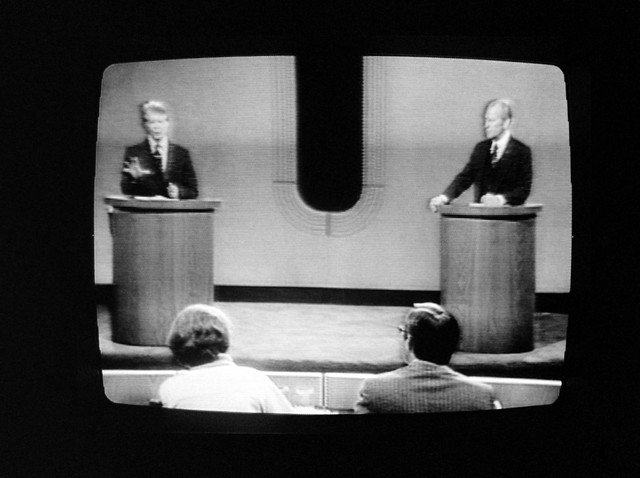Author : Shweta Khurana, 2nd Year student of RGSOIPL, IIT Law School.
Is the evolution and interpretation of laws lagging
behind the technological advancements? The recent Supreme Court judgment in the
case of American Broadcasting Companies Inc. v. Aereo Inc. 573 US 2014 implies so. The ruling observes that the
retransmission of programs to the paid subscribers without the copyright
owner’s authorisation or license is violative of the copyright law. The case
raises the question of liability of the companies that offer the subscribers
the ability to watch and record local broadcast television over the internet on
payment at monthly basis. The US Supreme Court rejecting the respondent’s
contentions as to their retransmission activity not coming within the meaning
of “public performance” pointed out that such service was a tool or way to
avoid being held liable for copyright infringement.
Analysing the judgement, if we look into the
technology to get a clearer view as to the service in dispute being within the
meaning of “public performance” the said service allows all the paid
subscribers to watch programs airing on network television or record programs
that will air in the future over the Internet.
The service provides three-in-one function as that of a regular
television antenna, a recording device, and an application that makes these
services work on devices other than televisions and computers. This is enabled
by use of thousands of antennas that are distinct for each subscriber and
function to capture the local broadcast signals i.e. thus the service bears
similarity to modern day cable systems. Pointing to the definition of the
public performance under the US Copyright Act, 1976[1], 17 U.S. Code § 101 states that:
To perform or display a work “publicly” means—
(1) to perform or display it at a place open to the
public or at any place where a substantial number of persons outside of a
normal circle of a family and its social acquaintances is gathered; or
(2) to transmit
or otherwise communicate a performance or display of the work to a place
specified by clause (1) or to the
public, by means of any device or process, whether the members of the public capable of receiving the
performance or display receive it in the
same place or in separate places and at the same time or at different times.
Interpreting the words of the definition and applying
it to the dispute under question, it is noted that Aereo sent each of its
subscribers an individualized/ private transmission of a performance from a
unique copy of each copyrighted program captured and transmitted through
different antennas. Also the servers are subscriber specific and does not
involve transmission of performances “to the public,” but rather a number of
"private" performances to paying subscribers.
Referring to two similar cases of Fortnightly Corp. v. United Artist Television Inc.[2] and Teleprompter Corp. v. Columbia Broadcasting System Inc.[3] where the community antenna television (CATV) systems
were considered to be outside the purview of ‘public performers’ and these
systems were said to be like a viewer rather than a broadcaster as these
systems only perform the function of carrying the programs which have already
been released to the public by private channels to individual viewers.
Drawing a comparison with the Indian Copyright Act, 1957
as amended in 2012 that gives an expanded definition of “communication to
public” under Section 2 (ff)[4] so as to
include both works and performances (instead of just works as was the case
prior to the coming into effect of the 2012 amendments i.e. 'earlier'). Also,
the definition now explicitly states that it does not matter whether the
communication is ‘simultaneous or at
places and times chosen individually’. As such, it appears to include multicasting, narrowcasting and unicasting.
The explanation to the aforementioned section helps in understanding the
intricacies of the copyrighted works transmitted through satellite or cable
transmission so as to be considered within the definition of ‘public
performance’. This makes it clear that such a dispute under Indian Jurisdiction
would have suffered the same fate, preserving and protecting the broadcaster’s
rights ruling out copyright violation on part of the service provider.
Looking a bit deeper into the issue, one can see the
economic and technological implications of this judgment on the new and
upcoming technologies like Apple’s iCloud and Dropbox and other cloud computing
tools that provide easy online access to stored data, music, pictures and other
information via an online platform. It also raises concern as to the
affordability issue as the service enabled the viewers or subscribers to watch
and record local programs from various electronic devices on a very cheap
subscription monthly payment.
So, instead of leaving the judiciary to interpret the
law on their own, there is a need to find out such loopholes within the
legislation and improvise or evolve the law to keep pace with the leaping
technological breakthroughs as a 1976 legislation is not an appropriate legal
proposition to be applied in the era of Internet, digital video recorders and
smart phones.
Disclaimer: This blog or any post thereof
is not to be considered to be in any way associated with the official stand of
IIT kharagpur or RGSOIPL on the issues being discussed in the said post. The
opinions on the blog are the authors own and should not be considered as legal
advice.
[4] "communication to the public" means making any work
available for being seen or heard or
otherwise
enjoyed by the public directly or by any means of display or diffusion other
than by issuing
copies of
such work regardless of whether any member of the public actually sees, hears
or otherwise enjoys the work so made available.
Explanation.-
For the purposes of this clause, communication through satellite or cable or
any other
means of
simultaneous communication to more than one household or place of residence
including
residential
rooms of any hotel or hostel shall be deemed to be communication to the public;







Very well written! :)
ReplyDelete